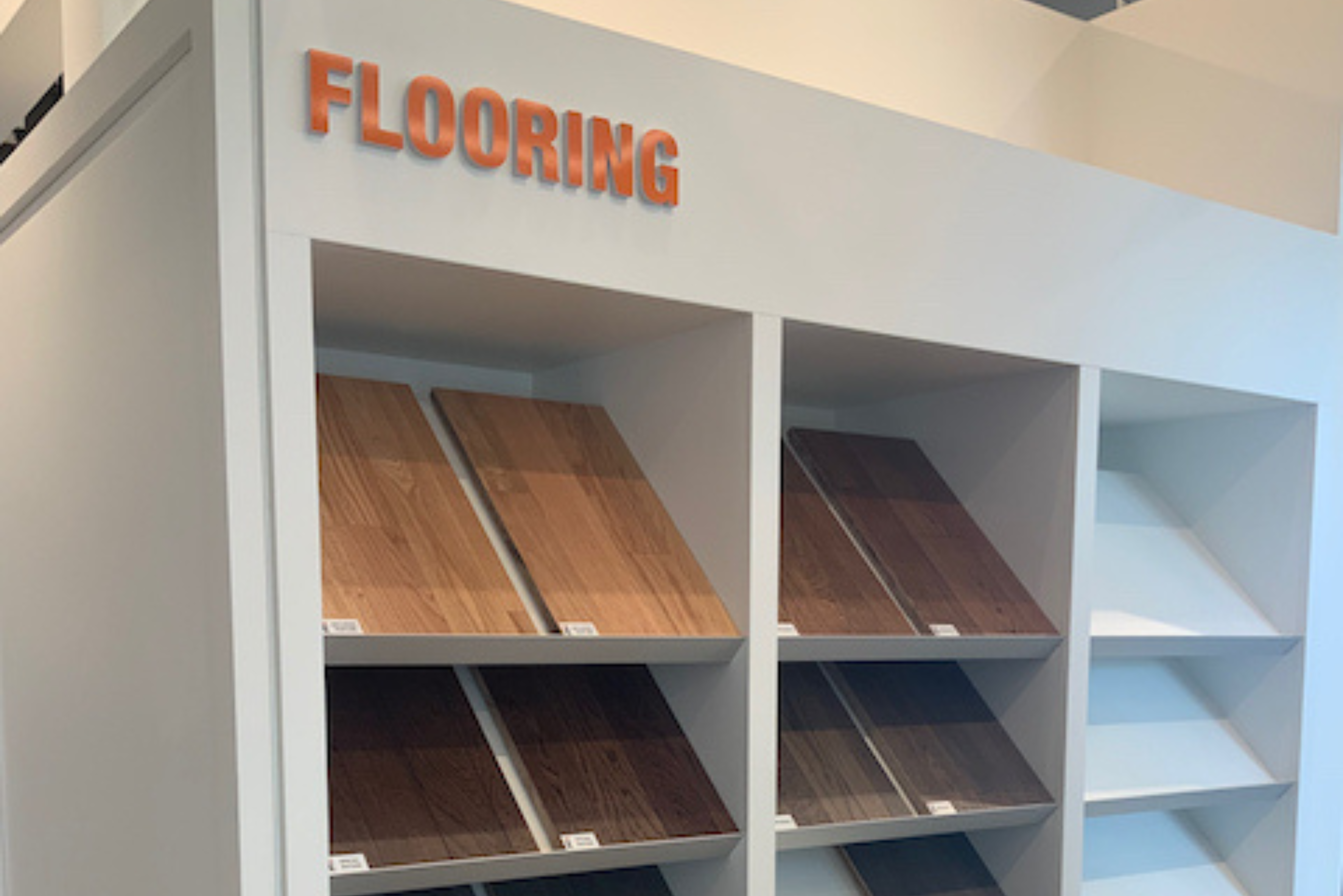Designing a décor studio is a complex process with a lot of moving parts. As my team and I are currently working on two different décor studios for new home builders (Empire Communities and Cachet Homes), I thought it would be a great time to share some of our recent lessons and insights.
A builder’s décor studio is a very important tool for enhancing the customer/homeowner experience and also for making sales. The décor studio is where homeowners come to customize and personalize their new home with finishes and upgrades so that it’s uniquely theirs, and so it’s a very important and special experience.
The décor studio has several roles:
- It must provide new homebuyers with an extensive selection of options for flooring, plumbing and lighting fixtures, custom cabinetry and more – in a way that’s organized and easy to peruse
- It must also be easily navigable by the décor studio staff
- It must allow the finishes and upgrades on display to really shine and excite homeowners
- It must provide an exciting, personalized and aspirational experience for new homeowners
- It must be quite durable, as things like work surfaces and displays will get a lot of use
- It must be update-friendly, so that samples can be changed out easily as needed
Over my next couple of posts, I’m going to break down some of these items further. If you’re working on a décor studio or hiring an interior design professional to work on yours, here are some things to consider.
Point #1: a décor studio must be functional. This means:
- It must be functional to décor studio staff/the Décor Consultant
- It must be functional to homeowners
- It must be durable
Let’s explore further.

Décor Studio Staff/the Décor Consultant
A well-designed décor studio must be smooth to navigate for its staff. It should be easy to see all options/samples, and the samples should be displayed in such a way that they can be accessed with ease and also put back with ease so they can be located again easily. This will ensure a seamless process for staff on a daily basis, which will reduce friction, stress and samples going missing. It will also facilitate a smoother process for homeowners. You want everyone to be at ease and relaxed.
Another key detail to consider here is what colour scheme will best highlight the samples. Typically, my team and I opt for black, white or dark grey. Neutrals that don’t steal the show and that aren’t too loud allow the finishes and upgrades to “pop” and really shine.
Lastly, it’s important to consider the flow of space when thinking about functionality. This is where most Décor Consultants start with their homeowners. By getting the Décor Consultant’s input, you’ll be able to work together to create a smooth and intuitive flow of traffic.
Homeowners
A great décor studio will also be functional for the homeowners’ use. You want to give them an optimal experience that’s stress-free, organized and smooth. All of the options and samples that are available should be easy to see and peruse. Quicker decision-making can be achieved by ensuring that homeowners are seeing all options easily. Again, the flow of space plays a key role here too. Think through the homeowner’s experience from start to finish, and take time to consider how their experience can be made as smooth and easy as possible.
Durability
Work surfaces in a décor studio should be able to withstand high wear and tear, using scratch-resistant materials. This is because items in a décor studio get a lot of daily use and because heavy items like tiles and hardwood samples can easily damage the work surfaces if you don’t plan ahead. This isn’t your typical model home – this space will be used daily, and it will get banged around.
Displays should also be able to withstand high wear and tear, again using scratch-resistant materials. Taking samples in and out of the displays will cause damage over time.
So, that covers the functionality of décor studios! Stay tuned for my next post sharing my tips and tricks for designing décor studios. Got any questions or topics you’d like me to cover? Connect with me on Instagram, Facebook or LinkedIn, and let me know!




